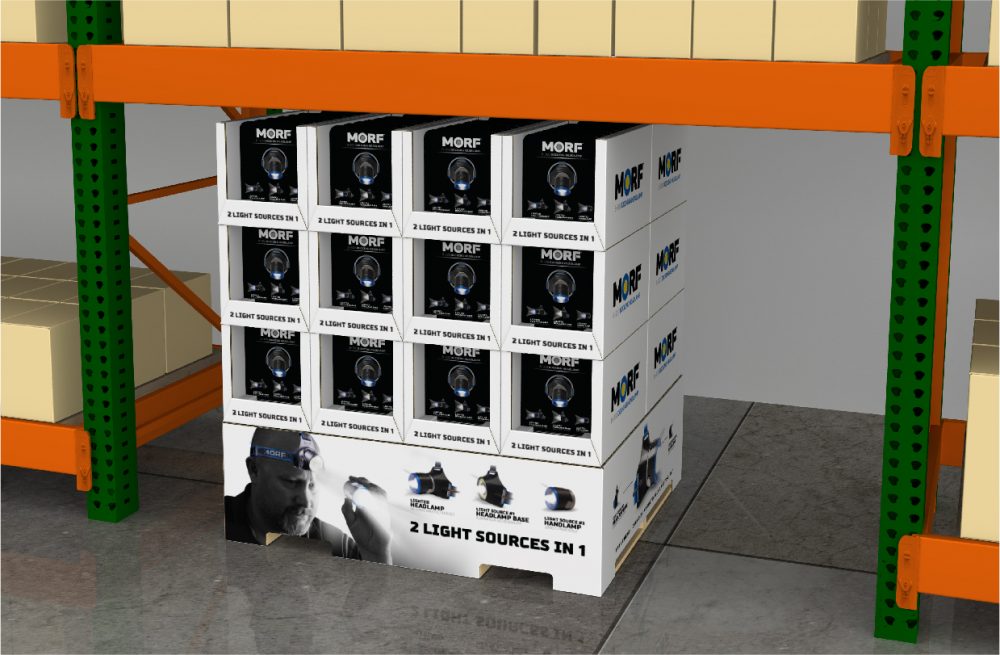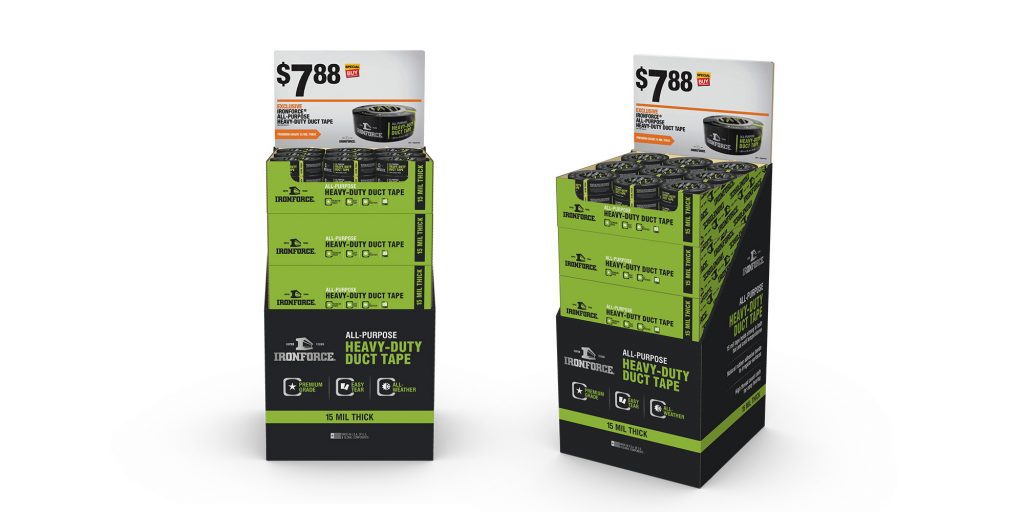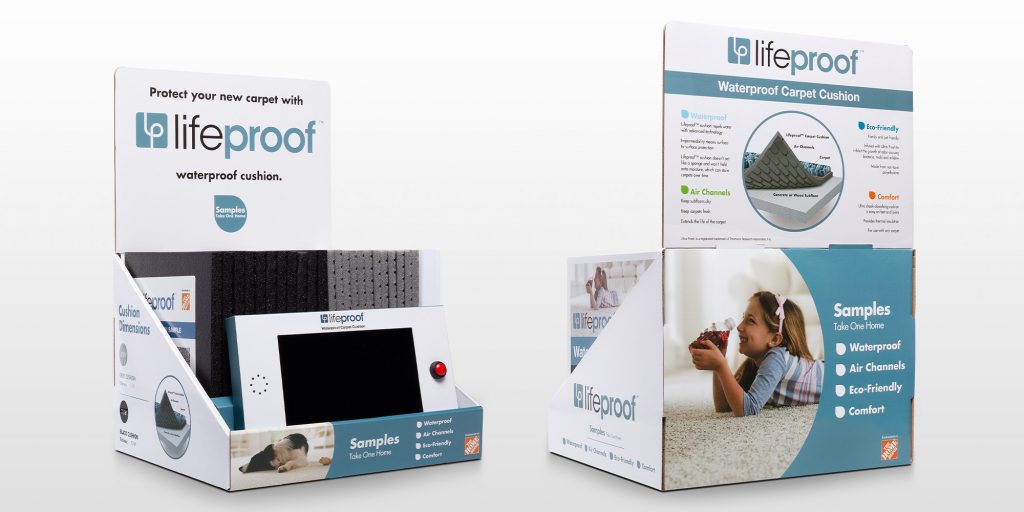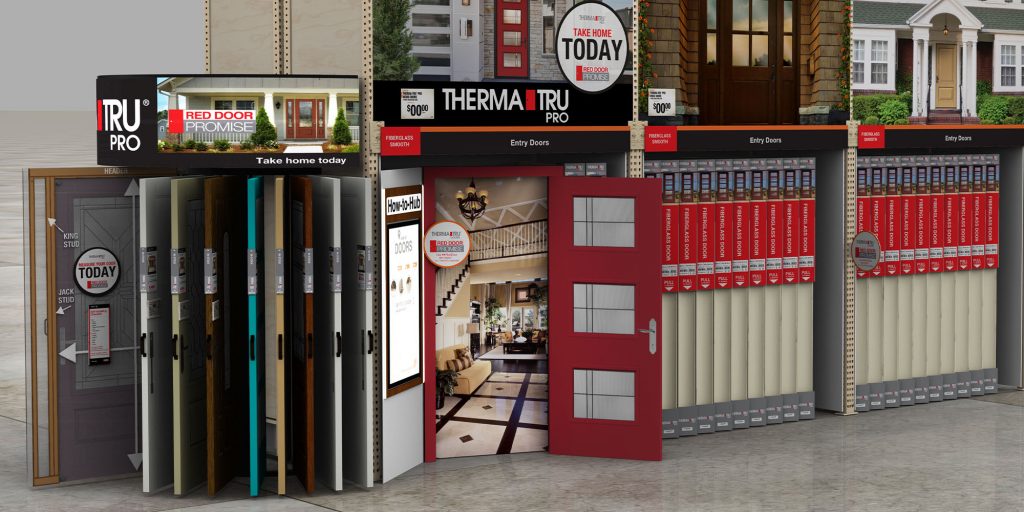
If you’ve walked through any big-box retailer in the last decade, you’ve probably noticed that more and more product is not on the shelf. Point-of-purchase (POP) displays are especially ubiquitous in home improvement stores where the aisles are wide and seem to invite retail merchandising. Shoppers may have mixed reviews about sharing aisle space with retail merchandising, but there are real advantages to off-shelf displays when they are designed appropriately.
There’s more to successful off-shelf retail merchandising than location alone. A good POP display covers all the bases. It’s attention-grabbing, engaging, helpful and easy to shop. A good POP display also strikes the right balance between being shippable, disposable and strong enough to stand up to the rigors of life in the aisles. Each of these qualifications ebb and flow depending on how long a POP display is intended to last.
The Three Types of POP Displays
There are three basic types of displays – temporary, semipermanent and permanent. As the name implies, each off-shelf merchandising type comes with different expectations around life span, durability and maintenance. Likewise, they offer different benefits, from cost to positioning.

1. Temporary Off-Shelf Merchandising
One of the more familiar types of retail merchandising displays is the temporary POP. By definition, temporary off-shelf retail merchandising displays are short-lived and typically not restocked by associates. Once the product is shopped down/sold out, these displays are disposed of or recycled.
You see temporary POP in retailers like Walmart and Costco, where shopping frequency makes it easy to move product. But there are plenty in The Home Depot and Lowe’s, too.
When to Use Temporary POP
One of the main reasons to consider a temporary off-shelf display is to highlight promotional products. In home improvement, this often includes sale items, special buys or combo packs. It’s also an opportunity to display products that are complementary so that they are positioned as such. For example, consider the impact of a display that houses both a concentrated cleaner and a branded spray bottle together.
Seasonality is another reason to consider temporary POP. Creative opportunities around holidays are an untapped market in the home improvement industry. For example, consider the growth in Halloween merchandising at The Home Depot. It’s a holiday that isn’t traditionally associated with home improvement but may have overtaken Father’s Day in terms of merchandising and sales.
Another use for temporary off-shelf merchandising is exposure and market testing. This is where we are most often called in to help clients. New products seeking a spot on the shelf can prove their worth through retail sales by way of temporary POP.
Creative Criteria for Temporary Displays
When it comes to construction, temporary off-shelf displays have a hard job. They need to look good without costing a lot to print, build or ship. They aren’t built for longevity. Nor can they afford to be cheaply built and risk a negative brand association. This is particularly true for emerging brands and new product testing.
Temporary off-shelf displays require a lot of creative engineering. They are often constructed from low-cost materials like corrugated cardboard. And despite their short shelf life, temporary POP still needs to be engaging, helpful and easy to shop. Working with a knowledgeable team can help you to optimize your resources.

2. Semipermanent Off-Shelf Merchandising
Another example of home improvement retail POP is the semipermanent display. Unlike temporary POP, these displays are meant to last three to six months on average and can be accompanied by extra product for restocking. As a general rule, the product restock will ship with the display, and the combination requires more assembly on the part of retail associates.
When to Use Semipermanent Displays
Semipermanent off-shelf merchandising can include seasonal displays around bigger holidays. Think of the Christmas POP that shows up in early October and stays on the retail floor through the end of the year. This type of POP might also include clip strips, side caps and counter units for items like tape measures, hand sanitizer or flashlights.
Semipermanent displays are often an intermediary solution rather than a destination. They fill the gap when temporary POP lacks durability, and permanent POP is cost-prohibitive. For example, if we are designing an off-shelf display for a product test but are unsure of the shop-down rate, we will recommend a semipermanent construction to ensure that it lasts as long as necessary.
Likewise, a semipermanent display works well for products that are big, bulky, or heavy or whenever material expectations exceed that of a temporary display. Think building materials, lawn and garden, or seasonal exterior POP.
Creative Criteria for Semipermanent POP
Because they will be represented in-store for longer durations, semipermanent off-shelf displays should be designed with an enhanced user experience in mind and constructed to withstand more wear and tear. Semipermanent POP is usually built of corrugate plastic and/or metal.

3. Permanent Off-Shelf Merchandising
For long-lived products, merchandising can be off the shelf, too. Permanent POP is designed to live in one specific location for a year or more. You may recognize permanent off-shelf merchandising in home improvement retail for light switches, drills and toolboxes. With these displays, product is added over time and may be replenished through regular assortment distribution.
When to Use Permanent Displays
The rationale behind permanent displays is often motivated by brand and accessibility. Often, these displays are used to highlight a particular manufacturer or brand that is influential in the category. Semipermanent POP is particularly effective when it gets product off the shelf and makes it accessible to shoppers using the display to engage and educate. And it requires a brand with a strong position to fund a display that benefits the category as a whole.
Permanent off-shelf merchandising can also be a solution for products that are awkward to shop in typical retail racking. Consider products like ladders, doors or windows, where safety and accessibility can be barriers to sales. Permanent off-shelf displays can facilitate product demonstration and host video or technological features to help with POP education and engagement.
Think Sturdy for Permanent POP
Permanent POP is often made of metal or other materials that will stand up to some abuse and continual restocking and will appear in line with the existing fixtures in-store. As with semipermanent POP, as you begin to consider a longer shelf life for your retail merchandising, you have to consider the user experience that these displays must sustain. The longer a display exists in the store, the more opportunity you have for branding and education.
Off-Shelf Equals Opportunity
Off-shelf displays can solve a lot of different challenges in home improvement retail, which makes it a merchandising strategy worth keeping on the radar. Whether you are launching a new product, creating accessibility or increasing engagement across a category, there are as many opportunities off the shelf as there are on it.